“We’d love it if every time a traveller comes to Hauraki Coromandel, they help make this a better place. Not just leave a footprint, but a handprint.” – Hadley Dryden
Is it possible for every visit to make a better place to live, a healthier environment, and a stronger economy? That’s the vision Hadley Dryden and the team at Destination Hauraki Coromandel (DHC) are bringing to life. In this episode of Travel Beyond, Hadley explains how Hauraki Coromandel is finding ways for travel to make the world better by default.
To make that happen, the team at DHC is creating systems and experiences that bring positive results from the start.
One of the most tangible examples of DHC’s regenerative approach is its sustainability program, Good for Your Soul: Kaitiaki. The initiative invites visitors to donate native trees, which are eco-sourced and grown by local Māori iwi, then planted at special sites that can often be visited in person. Each contribution also supports predator control efforts to protect endangered species, including the kiwi.
The program is designed not only for travellers but also to engage local businesses as active stewards of the region. Operators are encouraged to adopt the initiative, with many matching guest donations or weaving it into their visitor experiences and making regeneration part of how they do business. Glass Bottom Boat Whitianga is a great example, matching every tree donated by guests and bridging marine tourism with land-based restoration. Some of that work is tied to the kiwi bird. As a national icon and ground-dwelling species, the kiwi reflects the health of the entire ecosystem. If the kiwi is doing well, it means the region’s biodiversity is too. That’s why the kiwi isn’t just a symbol in this story. It’s a key performance indicator in the region’s destination plan.
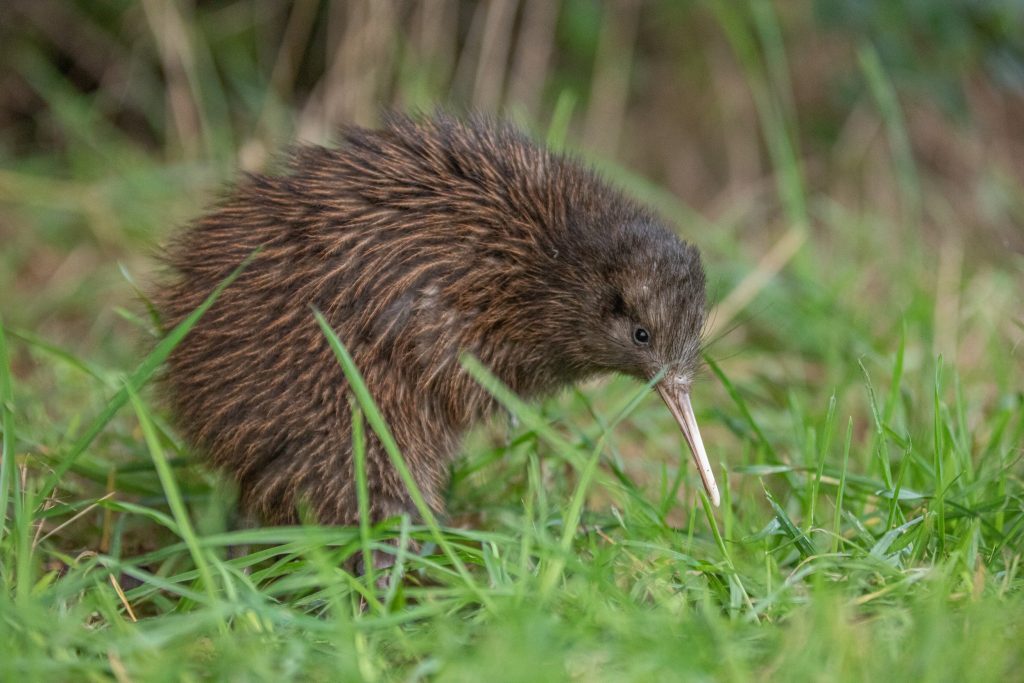
The Coromandel brown kiwi. Photo credit: Predator Free Hauraki Coromandel Community Trust
What makes this work is that it’s authentic to the place. “When you come here, it’s about slowing down,” Hadley says. “If you can connect with nature and yourself, you’ll start to understand the Coromandel way of life.”
The bigger goal is to make sure that by simply showing up, every visitor leaves something good behind. Not just less harm, but a lasting contribution. Hadley hopes people will leave more than footprints, they’ll leave a handprint.
And maybe even a legacy.
In this episode of Travel Beyond, you’ll learn:
- How DHC’s destination plan puts biodiversity front and centre.
- Why the kiwi is both a symbol and a measure of success.
- How inviting visitors to contribute is helping address overtourism risks and issues related to seasonality.
🎧 Subscribe to Travel Beyond on Apple Podcasts, Spotify, or your favourite podcast platform.
Show Notes
Visitors can make a direct contribution to local biodiversity through this native tree planting initiative
→ https://thecoromandel.com/good-for-your-soul-kaitiaki/donate/
Learn how Destination Hauraki Coromandel is embedding conservation into the visitor experience
→ https://thecoromandel.com/good-for-your-soul-kaitiaki
Explore the strategic plan that puts kiwi protection and regenerative travel at the heart of regional tourism
→ https://rtnz.org.nz/rto-destination-hauraki-coromandel/
Episode transcript
Hadley Dryden: What we’re trying to do is stay the course and build into these systems where when visitors do come, they have a net positive benefit for the community and the environment. So then in 10 years’ time, the area has actually improved.
David Archer: Welcome back to Travel Beyond. I’m David Archer from Destination Think recording from Haida Gwaii, the territory of the Haida Nation off the north coast of British Columbia in Canada. On this show, we look at travel’s role in making a better world, and we highlight leading destinations and change-makers.
Our guests are taking local action that the world can learn from. They’re helping to regenerate ecosystems, communities, and economies, and they’re often making positive change happen from the bottom up. Many of the voices that we’ve highlighted are part of the Destination Think collective, a peer group of more than 20 ambitious forward-thinking destinations working toward a better future for travel and the planet.
Today we’re going to visit Aotearoa in New Zealand where kiwi birds hold a special place in the popular imagination. They’ve become a national icon. They’re an indicator of a healthy ecosystem, and our guest points out that one Māori legend tells how the kiwi protected the trees of the forest by courageously sacrificing its ability to fly.
This is an impressive and important creature, but today kiwi are a threatened species and many people are working to protect kiwi populations and biodiversity across the country. Now, we’ve talked on this show before about how some destinations are teaching visitors how to protect nature when they travel, and that’s certainly worthwhile, and we’ve seen that in various destinations like Marquette in Michigan or the city of Copenhagen in Denmark.
But what kinds of systemic changes might be possible from within the tourism industry, like among operators and businesses of all kinds? What would it take to make tourism sustainable by default instead of making it something that a traveller has to opt into, like you do when you buy carbon credits on your airline ticket or when you choose to pick up litter?
For today’s guest, making sustainability the default isn’t just a utopian idea. Hadley Dryden and the team at Destination Hauraki Coromandel are carrying out a long-term vision to move in that direction. And as examples today, you’ll hear about the sustainable business programme the organization has led to help tourism operators.
You’ll hear about travel’s role in kiwi conservation. We also talked about some practical contributions that travellers can make when they visit. So there’s a lot of inspiration here for everyone. Please enjoy my conversation with Hadley Dryden.
Hadley Dryden: My name’s Hadley Dryden. I’m the General Manager of Destination Hauraki Coromandel, which is one of 30 regional tourism organizations in Aotearoa New Zealand, not far from the international gateway of Auckland. About two hours from there, and surrounded by two other big cities in New Zealand, Hamilton and Tauranga.
But our region is out on, basically on a peninsula with a very small population, 400 kilometers of coastline, vast ranges of conservation estate land with lots of little community villages dotted along the way. So it is a pretty special and beautiful place for New Zealanders and Kiwis.
David Archer: Hauraki and Coromandel represent two different areas. Is that right?
Hadley Dryden: You know, if we go back a little bit further, Hauraki actually represents the whole of the area from a kiwi perspective, or people of the land. And so there’s a district that remains that is called, and then another district, which is the peninsula, which is Thames-Coromandel, affectionately known as the Coromandel, and probably, for those who have any idea around the world, would resonate with that. But Hauraki is more of the historical reference to the area that catches the whole area as well.
David Archer: Oh, okay. Hauraki being, and you mentioned Māori, referring to the indigenous people of New Zealand, the Māori. Is that right?
Hadley Dryden: Yes. And particularly, more specifically, so tangata whenua are Māori or people of, and iwi are more distinct to where they stand or where their tūpuna relate back to in specific areas within the country. And so Hauraki being one of those.
David Archer: Okay, thanks. And so you are, you said about two hours from Auckland. How are people getting to the peninsula? They’re mostly driving, is there an airport nearby?
Hadley Dryden: The closest major airports are within one and a half hours, so we’re pretty lucky in that regard that we’ve got Auckland, Hamilton, and Tauranga airports within close vicinity, but in our area itself, it’s, yeah, they’re not really major commercial services. So it’s very tiny airports, which kind of suits the nature of the region to an extent. So most people are driving here for sure.
David Archer: Looking at the map, at least it reminds me a little bit of Tofino, which is a place that I got to visit last fall, being sort of like at the end of the road to some degree. Right?
Hadley Dryden: Yes, we’re pretty lucky and I think a lot of Kiwis and even international visitors that come here appreciate that we are somewhat tucked away. While we are close, we feel so far away from and removed from the hustle and bustle of everyday life.
David Archer: Yeah. What’s one thing you miss about this area when you are away?
Hadley Dryden: Probably just the access to nature, and it’s not as if you have to try to get out into nature. Like I’m actually sitting at home doing this interview now, and I can look out across Te Moana or the Firth of Thames, which is a body of water which is between us and Auckland basically. And if I take a step outside, I’ll genuinely hear native birds calling and things like that. So it’s not something you necessarily have to seek out, it’s just there.
David Archer: What’s one thing you always take friends to do when they visit?
Hadley Dryden: Oh, there’s so many choices and given that I’m promoting the whole region, that’s a dangerous question.
David Archer: It’s a dangerous one.
Hadley Dryden: But honestly, I could take you on a journey around Hauraki Coromandel now and brief, and take your pick.
So, the minute you leave Auckland or Waikato or Bay of Plenty and hit our area, you immediately hit natural icons. We’re so blessed not only with the coastline that we have and the ranges with so much conservation land, but we’ve got so many iconic must-do natural attractions, and it’s why Hauraki Coromandel actually performs really well as a visitor destination.
Just across this body of water that I’ve already referred to, there’s the Shorebird coast. And the hero of that place is the Godwit bird, which migrates here in, you know, for the extended summer. But that’s come all the way from the arctic, flies 14 days straight and lands here and rests and feeds.
The minute you get in, you’re hit with environs like that that are so natural, but significant as well. Then you continue driving and the Hauraki Rail Trail, which is New Zealand’s, they call it the nursery trail, which is a cycle trail. It’s flat. Takes you through pastoral lands, you see agricultural New Zealand, and then you go into steep ranges through native forests and riding alongside these rivers, which are just stunning.
And then if you come through to Thames, there’s the what we call Kauaeranga Valley or the Adventure Valley with New Zealand’s most popular walk outside of the Great Walks, the Pinnacles walk. It’s got unbelievable canyoning there. You come up the Thames coast, and you drive up towards Coromandel town and you’re hugging the coastline all the way up for over 40 kilometers.
You’ve got natural pōhutukawa trees, which flower and red blossom in the Christmas time and signal summer in New Zealand. You head further north and the further north you head, that’s like the last frontier. You know there’s a coastal walkway which traverses beach, farmland, native forests. You come around the coast to Wainuiototo or New Chum Beach, which has been heralded as one of the best beaches in the world through Lonely Planet for decades.
And it’s because there’s absolutely no development there. And locals are keenly passionate to keep it that way. And it just goes on. You come into the area, further around into Mercury Bay, you’ve got Cathedral Cove, which is probably our biggest icon. Hot Water Beach, which is a natural phenomenon where you put your feet in the sand and dig your own natural spa pool, which then gets taken over at high tide.
So you have to start again, and then you come down the coast. We’ve got Whenuakura, wildlife sanctuary, and the Aldermen Islands, which are marine reserves, great for fishing and diving. It just goes on. We’re incredibly lucky.
David Archer: Can you describe some of the values that this community stands for?
Hadley Dryden: I think some of the ways that we encapsulate it and the way that we share it as well through our work is the likes of the simple way of life. So when you come here, it’s all about slowing down and settling into what locals understand as being good for yourself. So if you can slow down and check into yourself and connect with nature, connect with yourself, you’ll start to understand the Coromandel way of life, which is really quite simple. It’s also where Kiwis holiday because of those reasons. So, we affectionately refer to ourselves as Kiwis. And it’s where a lot of the domestic population will come to holiday, particularly in summer. We also pride ourselves and share the fact that we’ve got this homegrown vibe going on and that’s all about the local arts sector and our enjoyment for the music and culture that comes with that, but also local produce. That’s quite a big thing. So the homegrown food and, you know, whether we’re sourcing it from the sea or the land.
David Archer: Let’s talk a little bit about some conservation efforts. You mentioned there that the region has a lot of conservation areas. Can you tell me about those areas and what they cover?
Hadley Dryden: Yes, we have a conservation estate that runs essentially right through the middle of the peninsula and effectively all the way through it as well. There are pockets of farmland that surround it between the conservation estate and the coastline and dotted in between. But, you know, we’ve got a large tract of land that is Department of Conservation estate and they manage that. And, you know, there’s local support through biodiversity protection efforts. We have a lot of groups in Hauraki Coromandel that support those efforts.
David Archer: Protecting the biodiversity does seem to be a huge priority. Can you describe some of the challenges that the region faces in that area, or environmentally?
Hadley Dryden: Oh, that’s a big question. There’s challenges everywhere from, in terms of, you know, protecting what people come to visit and why people live here. So from the coastline and the fisheries to the land use and the management of the conservation estate and actually protecting that as well. Yeah. You know, there’s definitely tension around that. And even tourism as well with the industry, making sure that we, you know, don’t suffer from the effects of overtourism, particularly in some of those popular spots and trying to get ahead of that and not manage it, but design it in a way that people can have actually a positive effect when they visit.
David Archer: Absolutely. You mentioned there are several, you know, organizations working on these programs and I know that conserving certain species is a priority among them. Can we talk a little bit about the kiwi bird and why are kiwi so important?
Hadley Dryden: They’re important for New Zealanders right across, you know, the country. They are a national icon and are deeply, sort of globally recognized for, but there’s a lot of history with the bird as well. And if we talk about te ao Māori and what the kiwi might mean to Māori, there is the legend or mythology that the kiwi gave up the greatest sacrifice to become, to lose its wings and become a bird that resides only on the ground.
And because of that sacrifice, then its mana or its esteem has been built up and it’s become the sort of champion. And that’s why it is the icon, you know, progressing on from that. Also, the feathers of the bird are used for cloaks, which is, you know, quite a significant recognition for those who get to wear, yeah, these sort of adornments, you know, as we progress. What it means for conservation is because it is a ground-nesting bird, it really is just an indicator species, so if a ground-nesting bird like a kiwi is doing well and thriving, then it means other species are likely to be doing well as well.
But it speaks to the history of New Zealand, which was effectively the last major landmass to be discovered. You know, we went for 80 million years plus of a country that had no major predation or threats. So we haven’t got poisonous snakes or spiders or things that are going to eat the other species.
So the kiwi was never really threatened until Kupe arrived. So we had the Pacific migration and then early European settlers and so on. And since that time, unfortunately, New Zealand’s become known really as the extinction capital of the world because previously these flora and fauna didn’t really have any threats.
So it was a pretty rapid turnaround. And for Hauraki Coromandel, we’ve got round about 107 threatened species. That’s why there’s a lot of work going on to try and protect, look after our backyard.
David Archer: If I visit, am I likely to see a kiwi when I’m out and about or where do kiwis live, I suppose? And does it affect the travel experience at all?
Hadley Dryden: Yes, good question. The short answer is no, and little pockets of areas where you might be afforded the chance to see kiwi more readily available, if you like. But the biggest response to that is they’re nocturnal. So they don’t come out during the day. And also the nature of our landscape, which has these dramatic ranges that are surrounded by coastline, it’s pretty rugged territory in many senses. Yeah. And it’s got, yeah, a lot of native bush throughout. So to see the kiwi, you’ll hear the kiwi before you see them, but if you look at the population, because there are kiwi surveys that are done, so from the northern peninsula to sort of halfway down and then along the Pacific coast, there’s strong populations of kiwi because of the efforts that conservation groups have put in to support them.
David Archer: How does travel factor into protecting kiwi, or how does the travel industry factor into that?
Hadley Dryden: I think for us, we’re trying to look for a way that travel really delivers those net positive benefits. In a utopian sense, every time a traveller comes to Hauraki Coromandel, we’d really love them to help make this a better place. So rather than leaving just footprints in a sustainable sense, we’d actually like them, like visitors to leave, you know, a handprint or a contribution to the area and potentially even a legacy.
David Archer: This is the idea of regeneration as opposed to sustainability.
Hadley Dryden: For sure. To go a little bit deeper, I guess because we’re in Aotearoa New Zealand, we’ve all been working on these destination management plans and how we can really do better for our regions and communities, not just for the economy, but also socially and environmentally. I struggle a little bit with the term of management. It feels like a retrospective idea, whereas if we actually design the tourism system and design experiences to engender these net positive outcomes, then we kind of get ahead of it and we’re in a better place. But what we’re trying to do is stay the course and build into these systems where when visitors do come, they have a net positive benefit for the community and the environment. So then in 10 years’ time, the area has actually improved, and we’re not talking about overtourism or particular areas that need more management.
David Archer: Maybe the designing better systems or designing experiences that can enable this kind of care. Maybe that’s a good segue to talking about the sustainable business programme that you’ve been involved with. Can you tell me about that and how that began and what it’s aiming to do?
Hadley Dryden: It’s really been an evolution of the program over the course of years and for decades there has, particularly in Hauraki Coromandel, but right across New Zealand, again, there’s been strategies and narrative around sustainable tourism.
And we have things in New Zealand like the Tourism Sustainability Commitment, which encourages businesses to practise sustainable initiatives in a better way and also Tiaki, the Tiaki Promise, and tiaki meaning to take care of people and place. So what we’ve tried to do is actually deliver something that builds on those types of philosophies and all that narrative in a far more tangible way that draws a connection for visitors and people to the place.
What it is in simple terms, is called Good For Your Soul Kaitiaki. So Good For Your Soul is how we promote the region, and kaitiaki is building on that Tiaki Promise to care for people and place. But an important note, in New Zealand, kai is the translation for food or when you consume something, and it’s also kind of an analogy that you take on that role, so to care for people and place, as in tiaki. When you expand that to kaitiaki, you’re taking on that role. So it’s a far more tangible sense. Got it. And if we can get people, if only for a little moment, to act as a kaitiaki, then in turn they’re actually protecting Good For Your Soul and the brand and the place. So it’s a reciprocal initiative.
And what we have done that’s kind of somewhat happened organically and evolved into where we’re at now, is working with Paeroa Trust, which is the iwi collective that is represented throughout the length of Hauraki Coromandel. They have a tree nursery where they eco-source native seedlings and have a whole lot of plants, which we have just really started launching this late last year, I guess, where the visitor industry, and that can be tourism businesses and even other businesses because, you know, tourism’s so significant in the region. Others have started partaking in it as well, whether I’m involved in tourism or not. But visitors as well can make a donation to one of, at the moment, 17 planting sites and that donation will go towards a native eco-sourced tree in that site, which actually happens to be a visitor location, and $1 from each of those donations goes to Predator Free Hauraki Coromandel, which represents I think over 65 community conservation groups who are doing all the work to protect our endangered species such as the kiwi.
David Archer: So travellers can contribute to this through Destination Hauraki Coromandel, is that right?
Hadley Dryden: Yes. So on thecoromandel.com we’ve created a Good For Your Soul Kaitiaki feature section. And it explains where all the different planting sites are and how you can potentially visit them, but also how you can make the donation as an individual or a business. And we’ve even got a world map now where we kind of liken it to the network, global network to the mycelium, how plants and trees all connect to each other under the ground. It’s in its early days. But the cool thing about it, I guess, is that, you know, we’re seeing the industry make it their own and kind of gamify it. Take it and adapt it to what suits them. We’ve got one operator in particular who’s just taken it and ran with it. For every visitor that donates a tree, they’ll match it. It’s called Glass Bottom Boat and operates in the marine reserve and visits Cathedral Cove and the blowholes and sea caves and sees all the marine life. Yet they’re supporting a land-based attraction. So, you know, that’s one way that they’re doing it. And then we’ve got a whole lot of different operators who are now adapting it to suit their needs as well. So, you know, it’s that every time a visitor comes just by default, they’re making a positive contribution to our place, which, and it’s genuinely planting a tree that will, and supporting biodiversity that will leave a legacy well beyond their visit and to future generations.
David Archer: You know, looking at the conservation efforts we’ve talked about with the kiwi and this business project to lead a sustainability program, thinking about what the region needs, what is one thing that you hope travellers take away from this story?
Hadley Dryden: Oh, that’s such a good question again, because I, to be honest, we do a lot of marketing that shares the beauty of this region and the value of conservation and biodiversity because it is naturally what people will see and get when they get here. But we are not naive enough to think that only those types of people who really love the environment are going to be the only ones that come here for this formula to work where people can make this a better place. We need more people to come, not in the peak season, but we need more people to come here. And it’s up to us and our responsibility here as locals and different stakeholder groups and so on, to really get on and design a way that just through people visiting that they will make the contribution.
So my message would just be, come and enjoy it and connect. And it’s up to us as locals to find a way to support your contribution to this area.
David Archer: Do you have any advice for others working on tourism’s role in conservation?
Hadley Dryden: Yes. I think for us, we’re really trying to build it into the system where it’s not a, not this or that. It’s an and/or, so we still need visitation and in fact we need more visitors to come, but we are trying to design a way that the visitors can make a net positive benefit when they come to the region as opposed to managing retrospectively. So that’s probably our key focus and hopefully a learning that we can share that others might be able to take on and adapt. I think sometimes some people get scared that if we’re going to focus so heavily on conservation or biodiversity or sustainability, that it means that it’ll lessen the likelihood of economic benefits.
When in fact, the economic benefit and the way that the systems work these days, that trade is currency, that’s always the default measure and mechanism. So I think we can have our cake and eat it too.
David Archer: Great. Thanks so much, Hadley, for being on the show today. I really appreciate it.
Hadley Dryden: Awesome. Thanks David. Appreciate it.
David Archer: This has been Travel Beyond, presented by Destination Think. And that was Hadley Dryden from Destination Coromandel. You can support conservation in this region by visiting thecoromandel.com and clicking donate. For more resources and show notes, visit our website at destinationthink.com. This episode was hosted, produced, and has theme music composed by me, David Archer.
Sara Raymond de Booy, my co-producer, Lindsay Payne and Cory Price provided production support. If you like what you hear, please take a moment to give us a five-star rating to help more people find us. Thanks for listening, and we’ll be back with more next week.
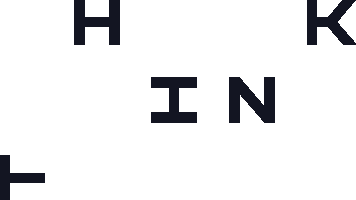

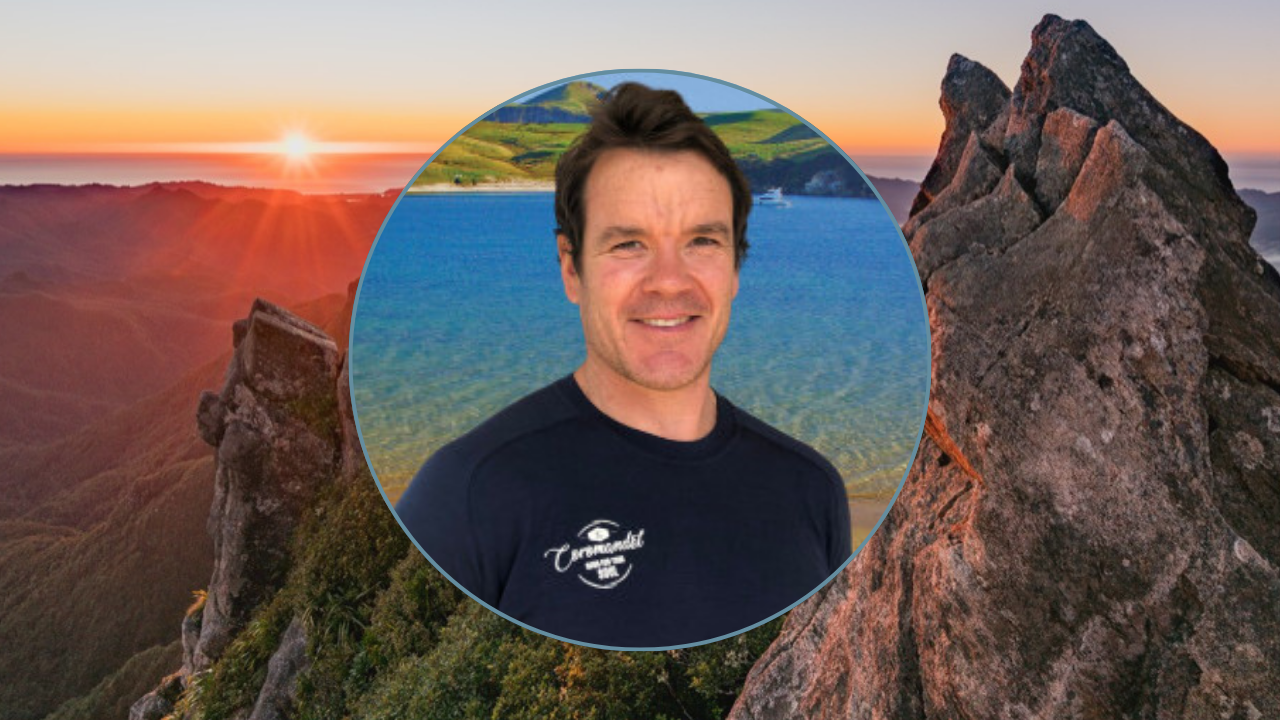
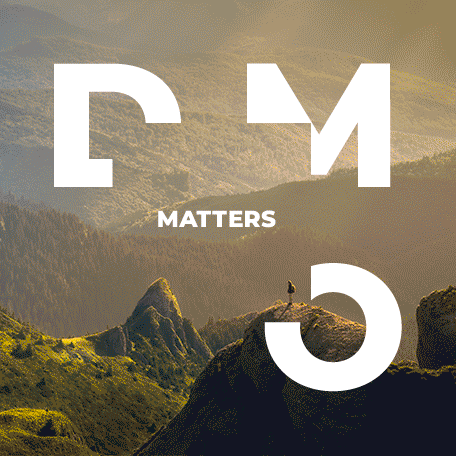
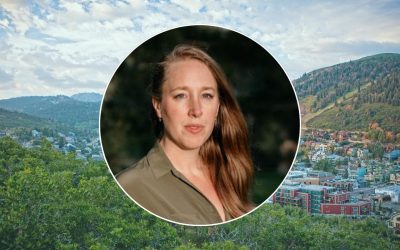
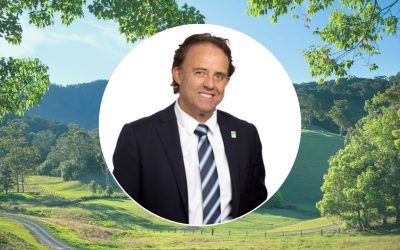




0 Comments